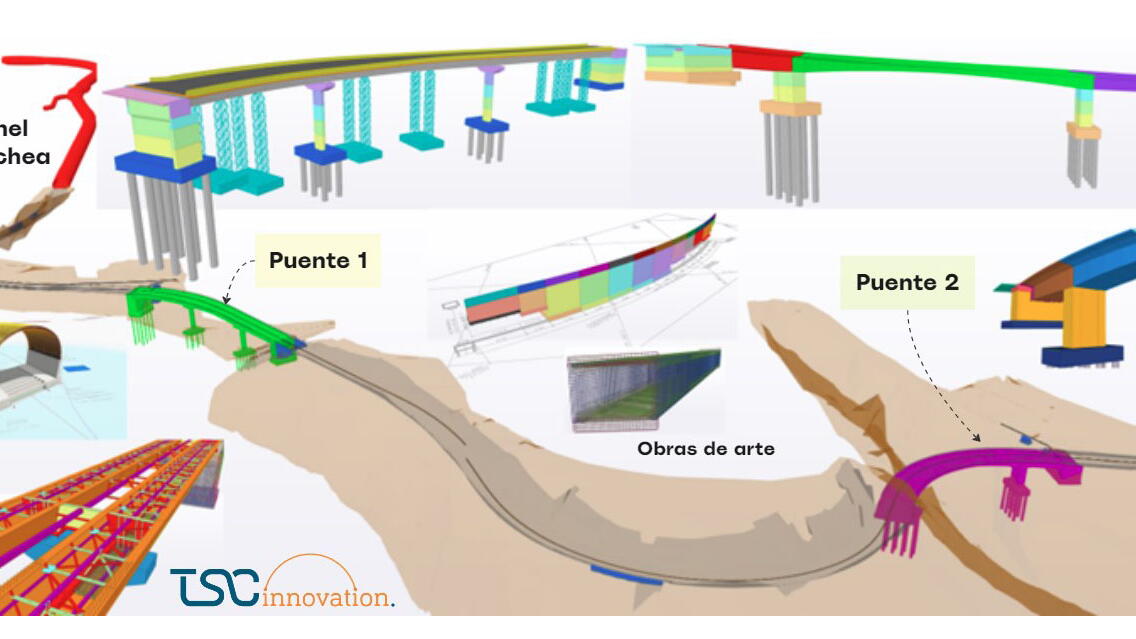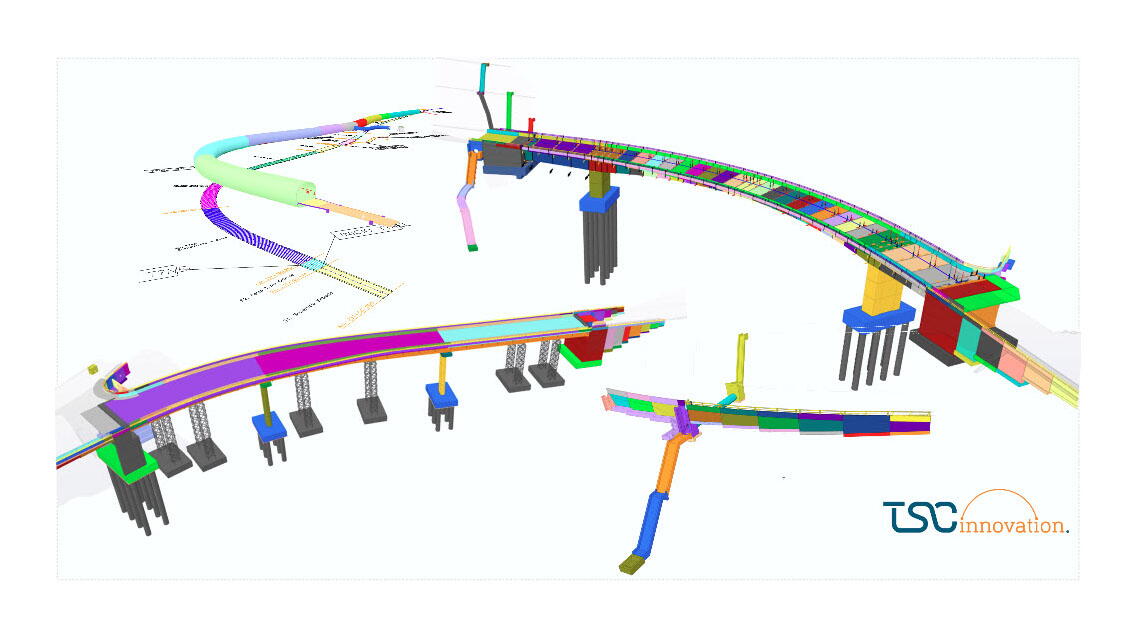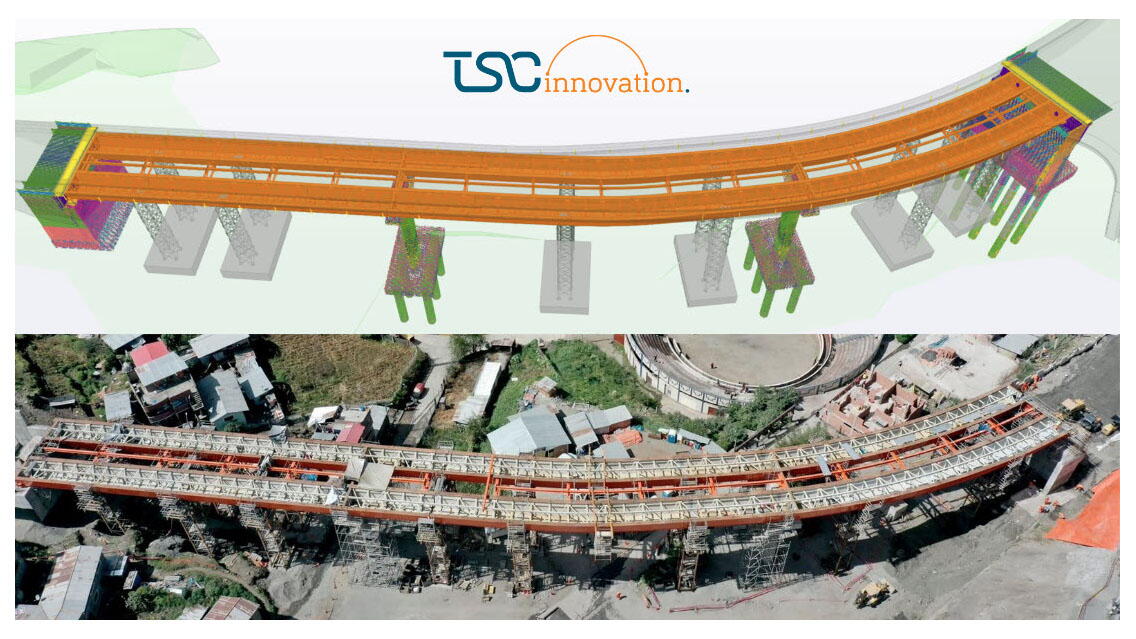The Ollachea Bypass project covers approximately 1.3 km and includes the construction of two main bridges. Bridge one, with a length of around 150 m, is a box girder steel bridge with a reinforced concrete deck. It features a complex road configuration with straight and curved sections. Its substructure consists of two abutments and two intermediate supports (concrete piers), founded on 1.50 m diameter drilled shafts.
Bridge two is a semi-integral prestressed concrete bridge with a box section. It has three spans with an approximate length of 130 m. The end spans were constructed in situ using formwork, while the central span was executed using the successive cantilever method, which is ideal for covering large spans between piers and big heights. The bridge’s substructure comprises two abutments and two box section piers, founded on 1.50 m diameter drilled shafts.
Additionally, various infrastructure works have been carried out along the road, such as culverts, retaining walls, and ditches. This bypass connects with the Ollachea Tunnel, which has an approximate length of 900 metres. This project has a significant impact on the Puno region, serving as a key transportation artery between Puno and the southern interoceanic highway, thus boosting the economic activity in the area. Furthermore, it provides greater visibility to tourist and archaeological sites such as Moyocpampa, Jurujuro, Sarapia, and others.
BIM Model Development:
TSC Innovation has been developing detailed engineering according to the Virtual Design and Construction (VDC) methodology. This approach enables the early integration of designers and builders to establish clear objectives to be achieved through the industrialization of reinforcements. VDC allows quantifying the benefits of modifying traditional processes to more efficient production systems, optimizing capacities, stocks, and work in progress in both engineering and production using innovative technologies such as BIM and cloud connectivity. TSC Innovation has developed this methodology in recent years in collaboration with Aceros Arequipa for a majority of bridge projects in Peru. The main software used for bridge detailing is Tekla Structures, through which the BIM detailed engineering of the project was developed.
A BIM model was developed during the pre-construction stage to achieve coordination and improve constructability on-site, as well as to achieve digital fabrication of the reinforcements.
The model was developed by an engineering team located in different places, for which the Tekla Model Sharing tool was essential. Additionally, Trimble Connect, a versatile common data environment, was used, allowing comprehensive visualization and project management. There was good interaction with the engineering and production team of the contractor Operadora SurPerú, as well as with major suppliers such as Aceros Arequipa, FGA, ULMA, and Grandes Cargas, among others.
The main integrated elements in the BIM model include Topography, control points, concrete, reinforcement bars, prestressing, inserts, embedded items, expansion joints, temporary structures, support devices, asphalt, stairs, drainage, etc.
The structures had a highly complex plan configuration, with alignments that included curved sections, super-elevations, and longitudinal slopes. It was vital to generate a parametric model through BIM automation using Rhinoceros-Grasshopper-Tekla to optimize the modeling time and obtain flexibility in the face of possible future changes. A first version of the model was developed based on the design information (PID) to identify queries and improvement opportunities. During the construction phase, various interferences and incompatibilities that could affect field activities were detected, and proposals were presented to resolve them during the pre-construction stage, which was defined using the model as support. Additionally, the model was constantly updated according to the information provided by suppliers and the contractor, allowing stakeholders to validate the structures in advance, facilitate transport logistics, and have a clearer understanding of what would be assembled on the construction site.
Digital Reinforcement Fabrication:
Approximately 1400 tons of reinforcement steel were supplied for the project. A level of development (LOD) of 400 was required, which allowed us to generate cutting and bending lists for the automated fabrication of the steel sized by Aceros Arequipa.
Furthermore, the elements in the BIM model have attributes that facilitated better project tracking and control online, ensuring information traceability throughout the different processes of the supply chain.





